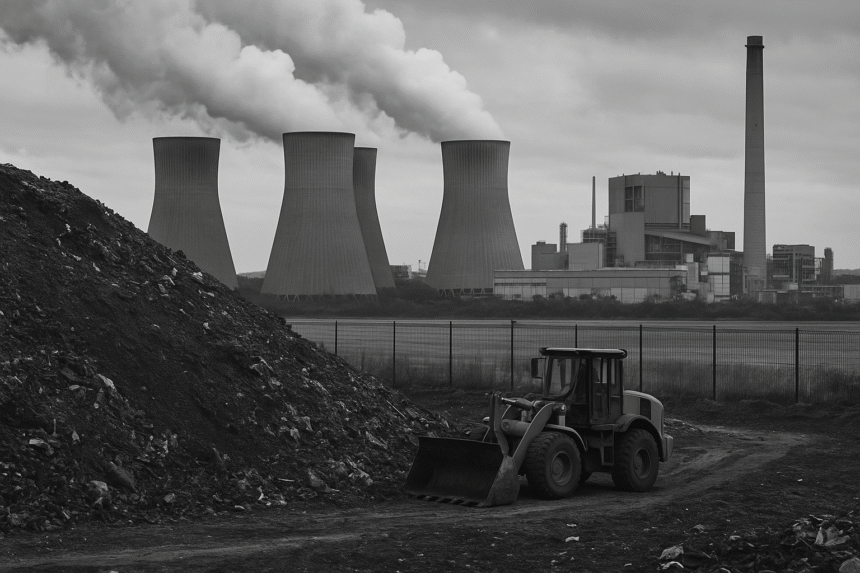Introduction: Environmental Clauses Shouldn’t Be Guesswork
A few months ago, I reviewed a waste management contract tied to a solar infrastructure project. Everything looked solid—until we got to the liability clause. It said nothing about who would be responsible for environmental violations caused by subcontractors. The project was in an area under strict environmental scrutiny, and this oversight could have triggered penalties, delays, or lawsuits. This is a prime example of why environmental contracts need clearer risk allocation to avoid costly issues down the line.
That moment confirmed what many of us already suspect: why environmental contracts need clearer risk allocation is no longer a niche concern—it’s a legal necessity.
In a world of rising environmental accountability, vague contract language is a liability. Whether you’re working in renewables, infrastructure, waste, or energy, this article explores why environmental risk must be spelled out clearly—and what happens when it’s not.
What Most People Get Wrong About Environmental Risk in Contracts
Many businesses—especially those entering emerging markets or green initiatives—believe that general liability clauses or standard force majeure provisions are enough to cover environmental risk. They’re not.
Here’s what this mindset gets wrong:
- It assumes all environmental risk is covered by insurance.
- It ignores the growing legal complexity around ESG, carbon credits, and circularity.
- It assumes subcontractor violations are automatically absorbed by the lowest tier.
In reality, environmental contracts need clearer risk allocation to properly address these complexities and ensure that all potential environmental risks are accounted for and managed effectively.
In reality, without clear risk allocation in environmental contracts, even simple issues—like soil contamination, wastewater leakage, or unlicensed emissions—can trigger:
- Regulatory investigations
- Project shutdowns
- Investor panic
- Public reputational damage
You can’t outsource clarity. That’s why environmental contracts need clearer risk allocation—because vagueness invites blame games when it’s already too late.
Why Environmental Contracts Need Clearer Risk Allocation
Let’s break this down into three key reasons why environmental contracts need clearer risk allocation now more than ever.
1. Environmental Regulation Is Evolving—and Aggressively Enforced
Governments around the world are tightening environmental rules. From the EU’s Corporate Sustainability Due Diligence Directive to the UAE’s Clean Energy Strategy, project developers and operators face increasing scrutiny.
What this means is that risk isn’t just legal—it’s reputational, operational, and financial. If an EPC contractor causes emissions over the legal threshold, but the operator holds the permit, who’s responsible?
Only a clearly drafted contract can answer that.
2. Environmental Risk Is Shared—But Rarely Defined
On most infrastructure or energy projects, multiple parties are involved:
- Developers
- Contractors
- Subcontractors
- Local partners
- Government agencies
Each one has a role in ensuring environmental compliance. But unless contracts specify who is liable for what (e.g., air quality testing, spill response, compliance audits), enforcement becomes a nightmare.
Without clarity, enforcement defaults to the party with the deepest pockets—or the weakest bargaining position.
That’s why environmental contracts need clearer risk allocation: not because it’s nice to have, but because uncertainty is costly.
3. Investors Are Now Asking About Environmental Risk Allocation
Environmental, Social, and Governance (ESG) metrics are now a routine part of investor due diligence.
When risk isn’t clearly allocated, investors ask:
- Who carries the burden for cleanup?
- Are indemnities capped or unlimited?
- Who discloses environmental data to regulators?
- How do supply chain violations flow up the contract chain?
And if those questions aren’t answered upfront, the deal is delayed—or dropped.
That’s another reason why environmental contracts need clearer risk allocation—because legal clarity drives commercial confidence.
A Real-Life Example: The Landfill That Blocked a Power Deal
A client once approached us with a proposed acquisition of a biomass-to-energy facility. Everything looked profitable—except one environmental issue. The facility had a small landfill area that was not clearly governed by the main EPC contract.
The environmental compliance clause only stated that “the project shall comply with local environmental laws,” with no mention of who would handle legacy waste liabilities.
As a result, due diligence flagged the site as a medium-risk asset. The investor demanded a $1.2 million holdback until the issue was resolved.
That holdback nearly derailed the acquisition.
Why? Because environmental contracts need clearer risk allocation, and in this case, that one missing clause affected both legal risk and the cash flow forecast.
Counterpoint: “But We Already Have Environmental Insurance”
Environmental insurance is useful. But it’s not a substitute for well-drafted contracts. Insurers may:
- Deny claims due to ambiguous contract terms
- Require exclusion zones for certain violations
- Limit payouts for third-party pollution events
This is why environmental contracts need clearer risk allocation—to ensure that all risks are clearly defined and covered, and to prevent issues that insurance alone cannot address.
Relying solely on insurance assumes that someone else will figure it out later. That’s risky. Prevention through clear environmental risk allocation is always cheaper than remediation after the fact.
Besides, contracts can create incentives for better behavior—penalties for non-compliance, rewards for clean audits, or triggers for reporting breaches.
Final Thoughts: Contracts Must Evolve With Climate Risk
We can no longer treat environmental clauses as boilerplate. Climate risk isn’t just about storms or emissions—it’s about liability, funding, and enforceability.
If you’re working in any sector that touches the environment—energy, mining, water, real estate, or logistics—your contracts must catch up.
- Ask yourself: Does my contract spell out who handles spills, audits, penalties, or site inspections?
- Do we define “environmental damage” in measurable terms?
- Do subcontractors flow risk downstream—or does it snap back to us?
If not, it’s time to revise.
👉 Need help reviewing or drafting better contracts? Book a review with our team, or download our Environmental Risk Allocation Checklist to start the conversation.



Leave a Reply